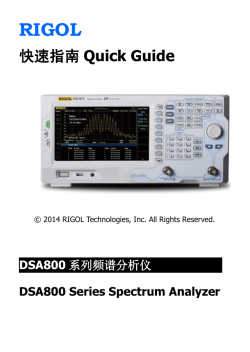

Pretty slick! “k” in the above formula is an SA-dependent constant. The DSA815 is much better, with a low-end setting of 100 Hz. My fancy Advantest SA can go to a RBW of 1 KHz. So setting the bandwidths narrow hugely increases the sweep time. Sweep time = (k * frequency span)/(VBW*RBW) Obviously you’d want to set RBW as narrow as possible and VBW just where the data is reasonably noise-free. VBW is video bandwidth, a smoothing filter applied to the displayed data.

A narrow RBW will display that sine wave as a spike, or nearly so. So setting this to a big number means a perfect sine wave, which should show as a infinitely-narrow spike in a perfect world, will be broad and mushy. It’s the width of the filter after the SA’s mixer stage. The DSA815’s frequency display is spot on, measured with a high-end HP signal generator. If you’re doing any sort of wireless work an SA is an essential bit of test equipment. In contrast, the SA is just like a superhet radio – a local oscillator sweeps from a user-selected low frequency up to a desired high frequency, with phenomenal gain since a mixer stage isolates just the frequency being swept at any time. You’re lucky to be able to see tens of mV. So why spend precious bucks on another instrument?Ī scope is not particularly sensitive. When in the noise I found them just about impossible to recognize.Īll of the important settings are clearly shown on the screen.Įvery modern digital scope can show the FFT of an input signal, which is exactly the same display. WBJC, at 91.5 MHz in the photo, comes in at -75 dBm, or around 50 picowatts.Īnd, though the instrument can display four markers and do delta math between them, they sure are hard to see. In this case the SA’s input is one meter of wire acting as an antenna.Ī couple of things to note: first, while the DSA815 and all other SA’s will display amplitude in a variety of units, the most useful is dBm, or dB referenced to 1 milliwatt. The peaks are various radio stations’ carrier frequencies.

It’s positioned at 91.5 MHz, the Baltimore classical station. The marker is barely visible as a “1” towards the left side of the screen. The center frequency is 100 MHz with a span of 20 MHz (that is, the SA is sweeping from 90 to 110 MHz), RBW and VBW (more on these later) of 3 KHz. The following picture shows the Rigol displaying the FM radio band. An SA shows amplitude on the vertical and frequency on the horizontal. Everyone knows that an oscilloscope displays voltage on the vertical axis, and time on the horizontal. One large wheel can adjust pretty much anything.
RIGOL DSA815 SAVE PICTURE PLUS
Picture swiped from Rigol’s web site.Īs is apparent from the picture, the front panel is well-laid out with individual buttons for each function, plus soft-buttons used to select sub-modes. For instance, you could feed the TG into a filter and the filter’s output to the SA’s input to display the filter’s frequency response. That’s critical for experiments with RF components.
RIGOL DSA815 SAVE PICTURE GENERATOR
The tracking generator output is the SA’s local oscillator as the SA scans from the displayed low frequency to the upper one the TG outputs the frequency being displayed. If you can live without the TG (tracking generator) option the DSA815 is $1295.īut I’d never buy an SA without the TG. The 1.5GHz unit is just $1495 that climbs to $9500 for the wide-bandwidth model.
RIGOL DSA815 SAVE PICTURE SERIES
They sent me a model DSA815-TG which spans to 1.5 GHz, but other models in the series go to 7.5 GHz. Saelig, their US distributor, loaned me one for evaluation, and the bottom line is that this baby packs a ton of capability into one small and inexpensive package. Rigol has a new low-cost spectrum analyzer (SA).


 0 kommentar(er)
0 kommentar(er)
